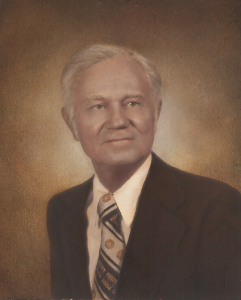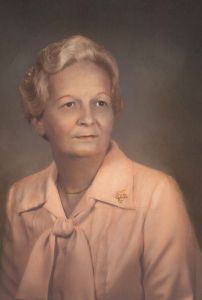Gentry Lectures


The Ivey and Nell Gentry Lectureship was established in 1986 by the generous gifts of relatives and friends of Ivey and Nell Gentry. The purpose of this lectureship is to bring to campus annually an outstanding scholar in mathematics.
Ivey Gentry (1919-1998) graduated from Wake Forest College in 1940. Service with the Army Air Corps during World War II was followed by enrollment at Duke University where he received a Ph.D. in mathematics in 1949. After Duke, he joined the faculty at Wake Forest College where he remained until retirement in 1989.
Professor Gentry and his wife, Nell, were devoted not only to each other, but also to Wake Forest. Professor Gentry was chair of the Department of Mathematics from 1956-81. His tenure as chair spanned the most formative years of the college, later university. His most important responsibility was to build a departmental faculty and curriculum for a growing institution on a new campus. During his twenty-five years as chair, the department grew from six faculty members to fourteen. When the college became a university in 1967, Professor Gentry recognized the importance of research and publication. He was elected the first chair of the newly created University Senate in 1967, and he served as director of the Office for Research from 1970-75. Professor Gentry received Wake Forest University’s highest honor, the medallion of merit, in 1997.
Before her death in 1983, Nell was also a long-time employee of Wake Forest. She worked in the Office of the Registrar and was secretary of the Department of Mathematics for many years. She was also a charter member and former president of the Wake Forest University Club. The tireless efforts of Ivey and Nell Gentry on behalf of the department were paramount to the growth and prosperity of the Department of Mathematics. Even to this day, we are the beneficiaries of their lives and service.
Past Gentry Lectures
Ian Agol, UC Berkeley
April 11, 2024
Francis Edward Su, Harvey Mudd College
Thursday, April 13, 2023
Dr. Kenneth A. Ribet, University of California – Berkeley
November 20 & 21, 2019
Barry Nussbaum, former Chief Statistician for the U.S. Environmental Protection Agency and former president of the American Statistical Association, November 12 & 13, 2018
G. Bard Ermentrout, University of Pittsburgh, Nov. 14 & Nov. 15, 2017
Mark Newman, University of Michigan, Nov. 30 & December 1, 2016
Cameron Gordon, University of Texas, Austin, Tuesday, April 19 & 20, 2016
Maria Chudnovsky, Columbia University, Tuesday, Oct. 28
Nick Trefethen, Oxford University, April 1 & 2, 2014
Jill Pipher, Brown University, 2012-2013
Mathematics and the computer: some unexpected pay-offs of an old relationship
The mathematics of public key cryptography and digital signatures
Raymond J. Carroll, Texas A & M University, 2011-2012
“Statistical Methods for the Interactive Effects of Genes and the Environment on Risk of Disease”
“Deconvolution, Measurement Error and Classification”
Ravi Vakil, Stanford University, 2010-2011
The Mathematics of Doodling
Murphy’s Law in Geometry
Efim Zelmanov, University of California, San Diego, 2009 -2010
What is Abstract Algebra?
Asymptotic Properties of Finite Groups
Ken Ono, University of Wisconsin at Madison, 2008-09
“Freeman Dyson’s Challenge For The Future: The Mock Theta Functions”
“Unearthing The Visions Of A Master: The Web Of Ramanujan’s Mock Theta Functions In Number Theory”
Jeffrey R. Weeks, Freelance Mathematician, Canton, New York, 2007-08
“The Shape of Space”
“Beginners Tour of Curved Space”
Jeffrey Rosenthal, Department of Statistics University of Toronto, 2006-07
“What is MCMC?”
“Coupling and Convergence of MCMC”
Arthur Benjamin, Harvey Mudd College, 2005-06
“Proofs That Really Count”, The Art of Combinatorial Proof
“Counting on Determinants”
Gene H. Golub, Stanford University, 2004-05
“A History of Numerical Linear Algebra”
“Solution of Non-Symmetric, Real Positive Linear Systems”
John Conway, Princeton University, 2003-04
“Some Things You Can’t Hear The Shape Of”
“From Elementary Particles to Free Will”
Jerrold E. Marsden, California Institute of Technology, 2002-03
The 3-Body Problem: Transport, and Space Mission Design
Geometric Mechanics, Variational Integrators, and Asteroid Pairs
Michael Artin, Massachusetts Institute of Technology, 2001-02
What is a Stack?
Geometry of NonCommutative Surfaces
Andrew Granville, University of Georgia, 2000 – 01
Number Races
Catalan’s Conjectures, Fermat’s Last Theorem, Other Equations, and the “abc” Primes in the New Millenium
Ingrid Daubechies, Princeton University, 1999-00
Surfing with Wavelets
Quantizing Redundant Representations
Frank Morgan, Williams College, 1998-99
The Soap Bubble Geometry Contest
Ideal Shapes
Margaret Wright, Bell Laboratories, Lucent Technologies, 1997-98
Better and Faster: Interdisciplinary Research for Fun and Profit
The Interior-Point Revolution in Constrained Optimization
Richard Brualdi, University of Wisconsin, 1996-97
Doris Schattschneider, Moravian College, 1995-96
The Fascination of Tiling
Visions of Symmetry: Mathematics in the Art of M. C. Escher
Georgia Benkart, University of Wisconsin, 1994-95
Life in the Aftermath – The World Beyond the Symmetric Group
Commuting Actions – A Tale of Two Groups
Jack Hale, Center for Dynamical Systems, 1993-94
Elementary Dynamics and Bifurcations
Asymptotic Behavior of Dissipative Systems
Bradley Efron, Stanford University, 1992-93
Shakespeare and the Case of the Suspicious Statisticians
Survival Analysis of the Gamma-Ray Burst Data
Robert Bryant, Duke University, 1991-92
How Warped Must a Surface Be?
The Geometry of the Willmore Problem
Ron Graham, AT&T Bell Labs and Rutgers University, 1990-91
Computers and Combinatories
Quasi-Random Graphs
Paul Waltman, Emory University, 1989-90
Modeling Competing Populations
Competition in the Gradostat
Lance Small, University of California, San Diego, 1988-89
Rings and Things
Traces and Triangularization
Phillip Griffiths, Duke University, 1987-88
The Unity of Mathematics: Poncelet’s Porism
The Unity of Mathematics: Linearizing Flows and Algebraic Curves
Carl Pomerance, University of Georgia, 1986-87
Public Key Cryptography and How to Crack It
Factoring Integers with Elliptic Curves
Walter Rudin, University of Wisconsin, 1985-86
Holomorpic Maps from Cn to Cn
Sets of Distance
